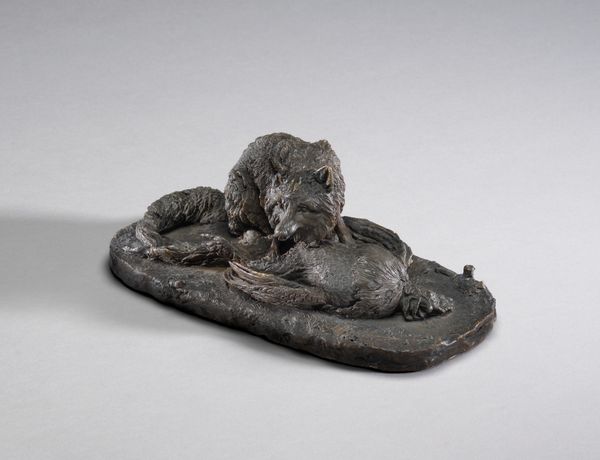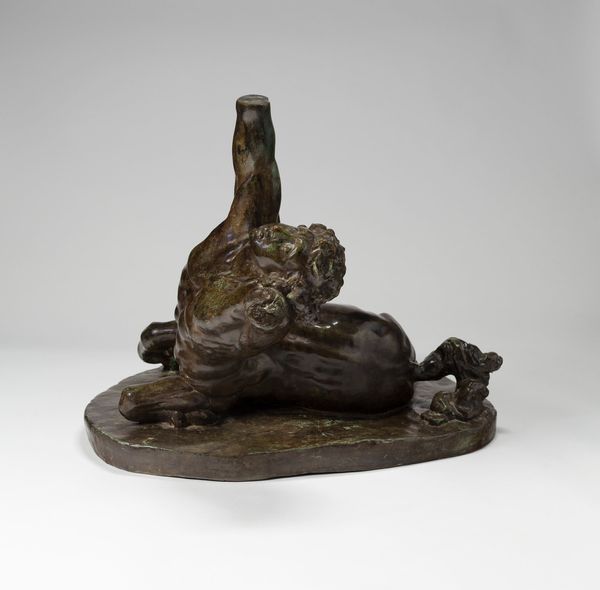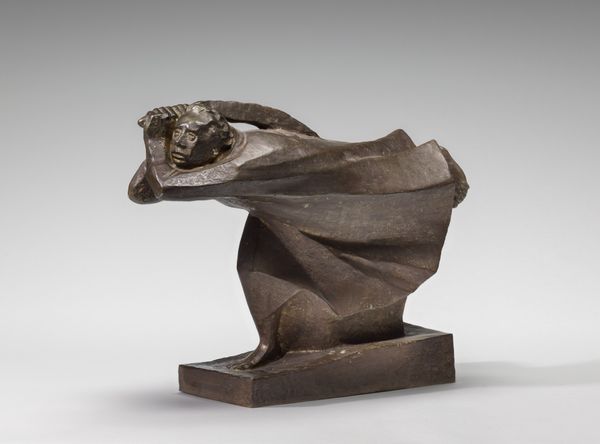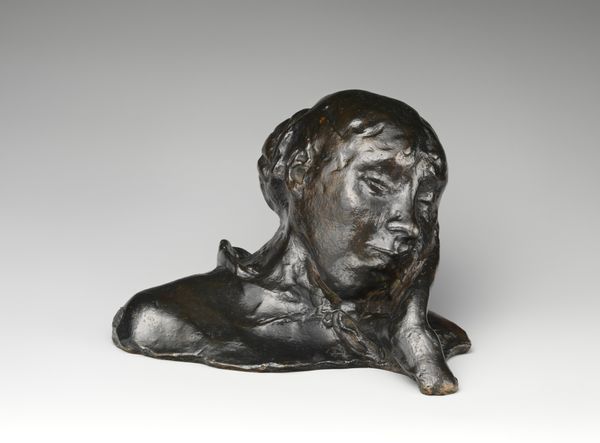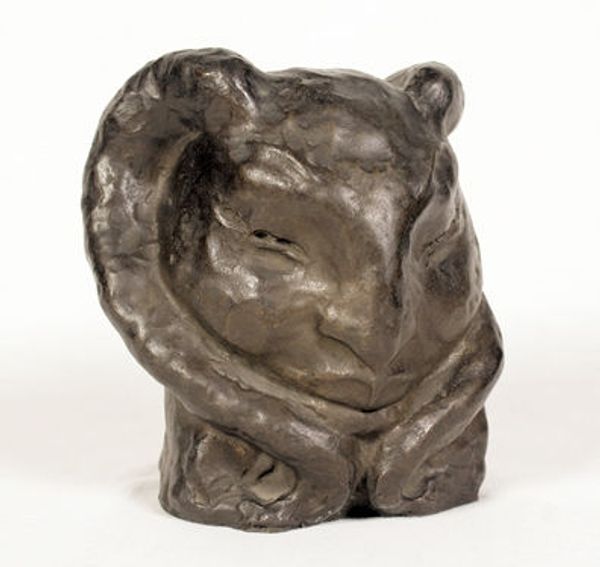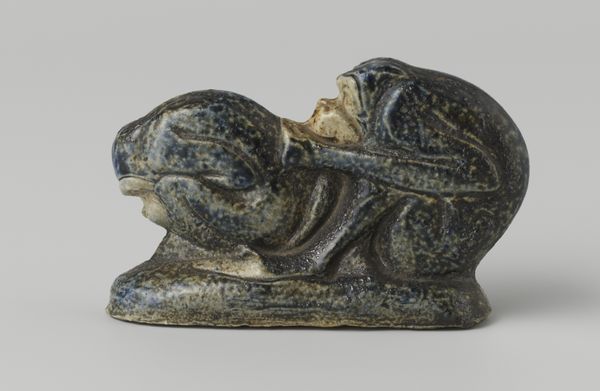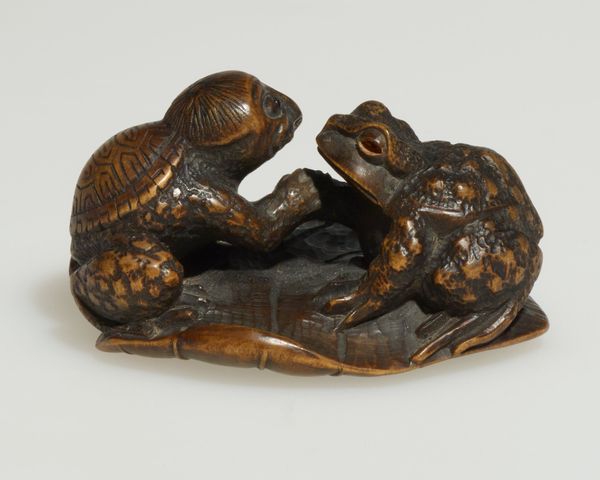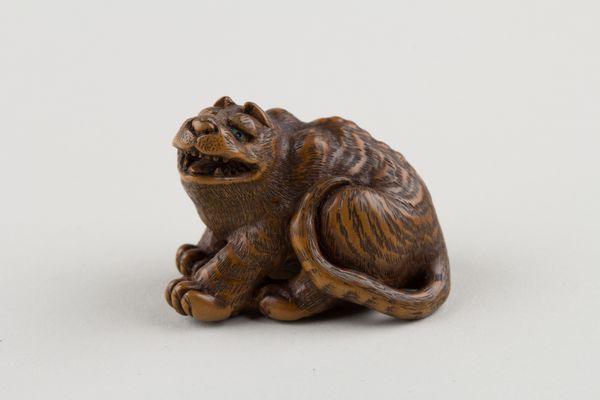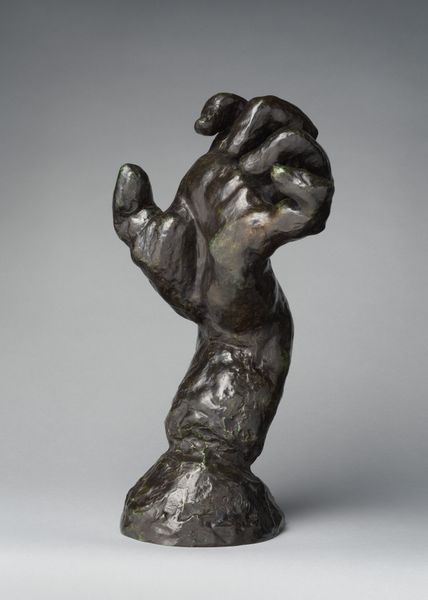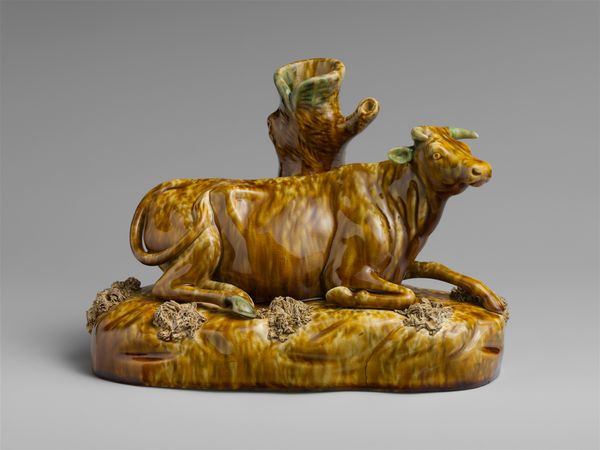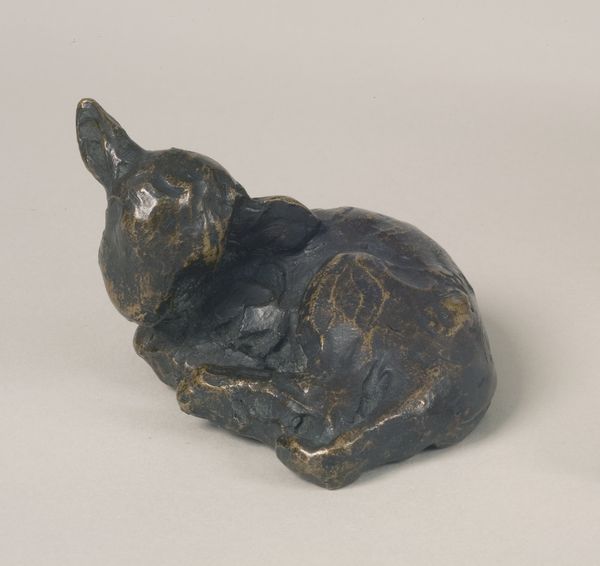
bronze, sculpture
#
animal
#
sculpture
#
landscape
#
bronze
#
figuration
#
sculpture
#
realism
Dimensions: 26.7 × 35.6 × 25.4 cm (10 1/2 × 14 × 10 in.)
Copyright: Public Domain
Editor: Here we have Edward Kemeys' bronze sculpture, "The Soul of Contentment (Black Bear)," dating from around 1886. It's wonderfully tactile; the bear seems utterly at peace. What strikes you most about it? Curator: I see a powerful statement about humanity's relationship with the natural world. Kemeys was a pioneer in American animal sculpture, but what's often missed is how his work engages with broader anxieties about industrialization and the disappearing wilderness. Does this “contentment” reflect a romanticized ideal, masking the violence inherent in westward expansion and ecological exploitation? Editor: So, you're saying the sculpture isn't just a charming depiction of a bear? Curator: Precisely. Consider the historical context. This sculpture was created during a period of immense social and environmental upheaval. The idealized portrayal of the bear could be interpreted as a commentary on what was being lost – or taken – as America “progressed.” It forces us to examine who gets to define "contentment" and at whose expense. How does the idea of Manifest Destiny complicate our understanding of this image? Editor: That’s a perspective I hadn’t considered. I was just thinking about the bear's cozy pose! Curator: Kemeys invites us to unpack these contradictions. Is this truly contentment, or is it a reflection of a cultural yearning for a nature that was already being irrevocably altered? It challenges us to critically assess the stories we tell ourselves about progress and civilization. Editor: It makes you think about what we value and what we’re willing to sacrifice for it. It is very thought provoking! Thanks for broadening my view! Curator: Absolutely. It is by connecting art to its history and social currents that we gain a deeper appreciation.
Comments
No comments
Be the first to comment and join the conversation on the ultimate creative platform.
